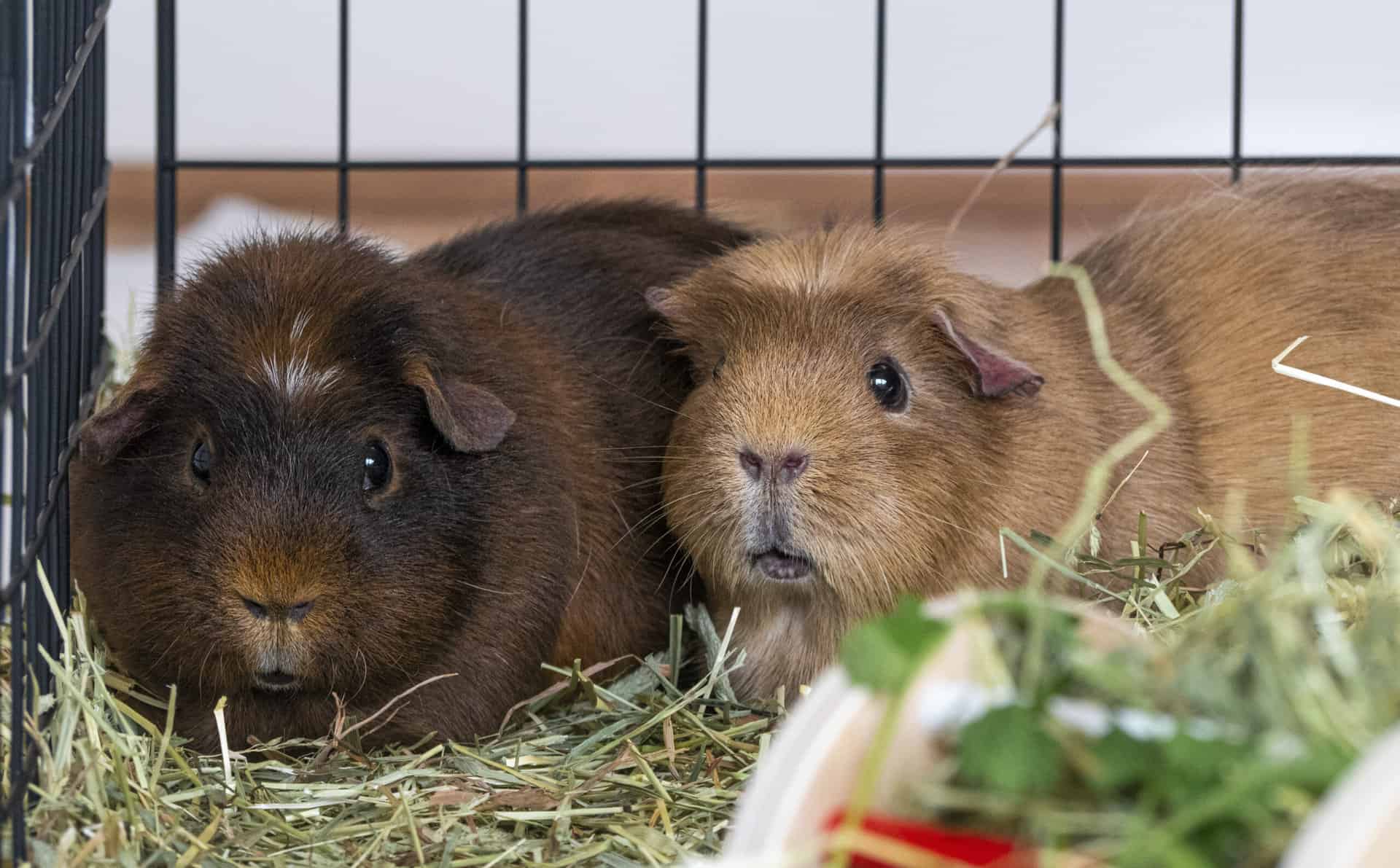Guinea pigs can happily live indoors or outdoors. The trick to indoor housing is adapting their environment for the great indoors. Get this right, and you’ll have a lovely experience with your fluffy squeaky housemates. Take a look at our top tips for your guinea pigs' In this section, we’ll cover:
Setting up your indoor guinea pigs' home ● Indoor housing options ●
Indoor exercise area ● Indoor guinea pig essentials ●
Setting up an ideal home for your indoor guinea pigs

Options for indoor guinea pig housing
There are a number of different options for indoor housing. The best ones are those that are flexible enough for you to build your own indoor guinea pig set-up, depending on what type of space you have.
Blue Cross advises using ‘modular housing' to provide a safe space for your indoor guinea pigs as it gives you lots of different sections to piece together in whichever way you like.
As with outdoor housing, your guinea pigs’ main living area should be no less than 1.5 long by 1m wide. The most popular modular housing for guinea pigs are:
- C and C grids – wireframes you can click together
- Puppy play pens
You can then furnish the area with a cosy bedroom hutch and lots of tunnels, nest boxes and shelters with deep piles of hay so your guinea pigs can move around confidently and be able to explore and hide if they want to. Woodgreen advises supplying multiple hiding areas and tunnels – the more the better. As guinea pigs don’t feel safe in open spaces, they’ll hide under the only shelter available. That’s why it’s a good idea to provide multiple options for them to move between.
Creating an indoor exercise area for your guinea pigs
If your indoor guinea pigs aren’t able to access outside space, they’ll need a space no less then 1.5 x 1m for exercise, where they can run free without supervision. Along with providing tunnels, hiding places and deep piles of fresh hay in their exercise area, make sure that:
- All doors are closed
- There are no escape holes
- Other pets, such as cats and dogs, are kept out of the room

Whether your guinea pigs are housed inside or outside, they need the opportunity to run around and explore in a safe area with lots of tunnels, hiding places and deep piles of fresh hay.
Did you know?
Around a quarter (24%) of guinea pigs are put in a good mood by social interaction, while 68% are put in a good mood by being given food and treats...
Source: The Burgess Excel Great British Guinea Pig Census
Essentials for creating the perfect indoor
set-up for your guinea pigs
- A gnaw-proof ceramic bowl
- Water bottles
- Nest boxes, tunnels and hiding places, such as Runaround tunnel and snugs
- Guinea pig toys, hay bars, foraging mixes to sprinkle about for your piggies to find on their explorations, and a variety of enrichment items such as cardboard and willow tunnels, treat balls, hidey huts, hay and twig mobiles, willow balls, willow sticks, seagrass mats, and loofah rolls
- Hay racks
- Cosy and absorbent dust-free paper bedding
- Lots and lots of tasty fresh meadow hay to tunnel in and munch on
- Nutritious grass-based indoor guinea pig nuggets
- Guinea-pig safe cleaning products




